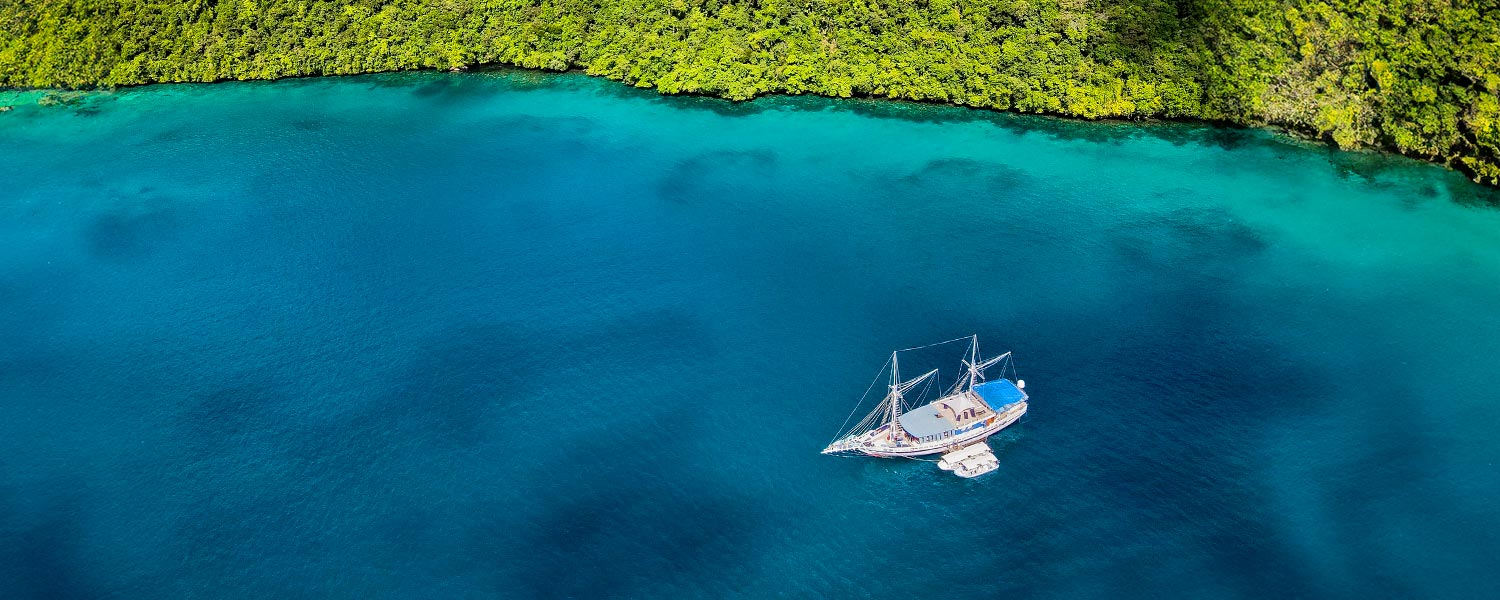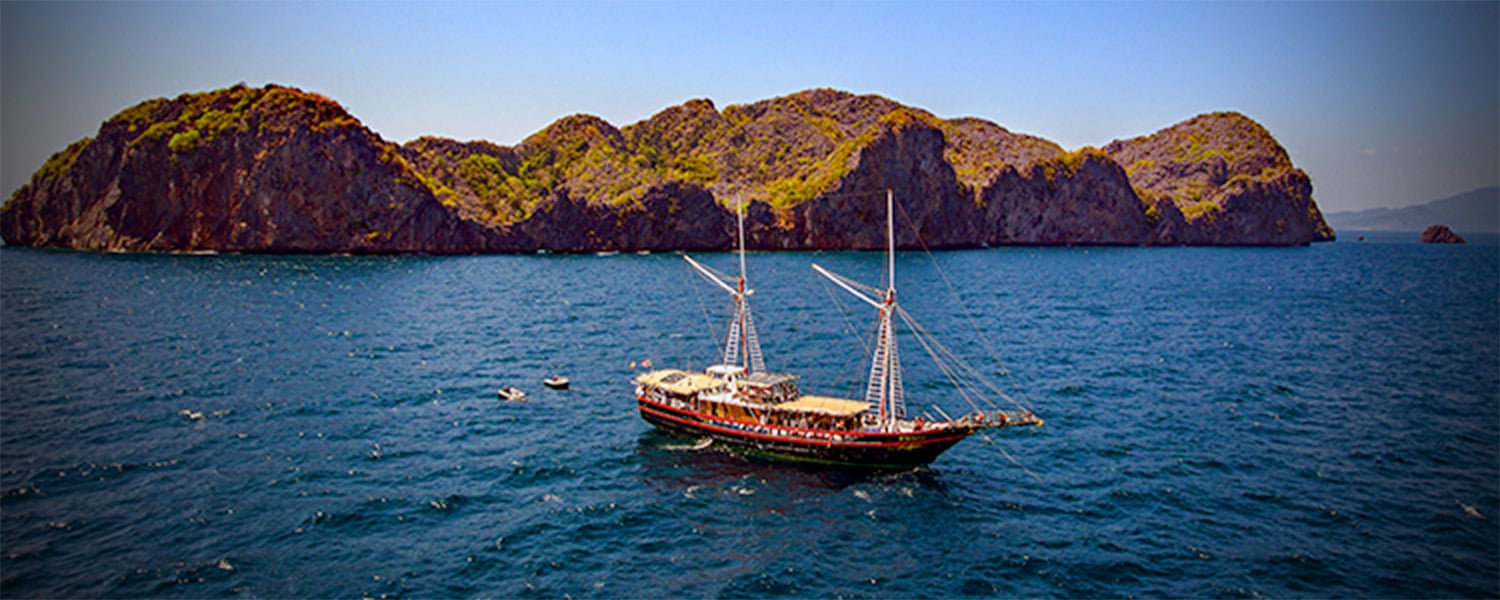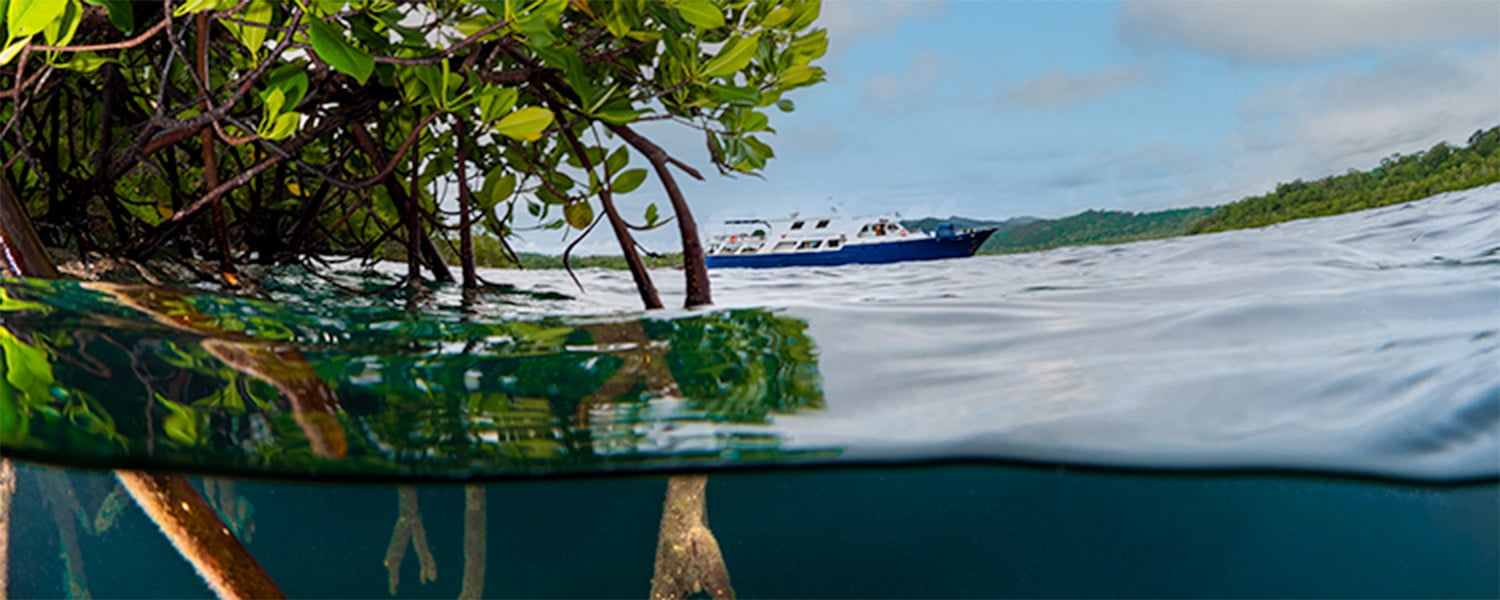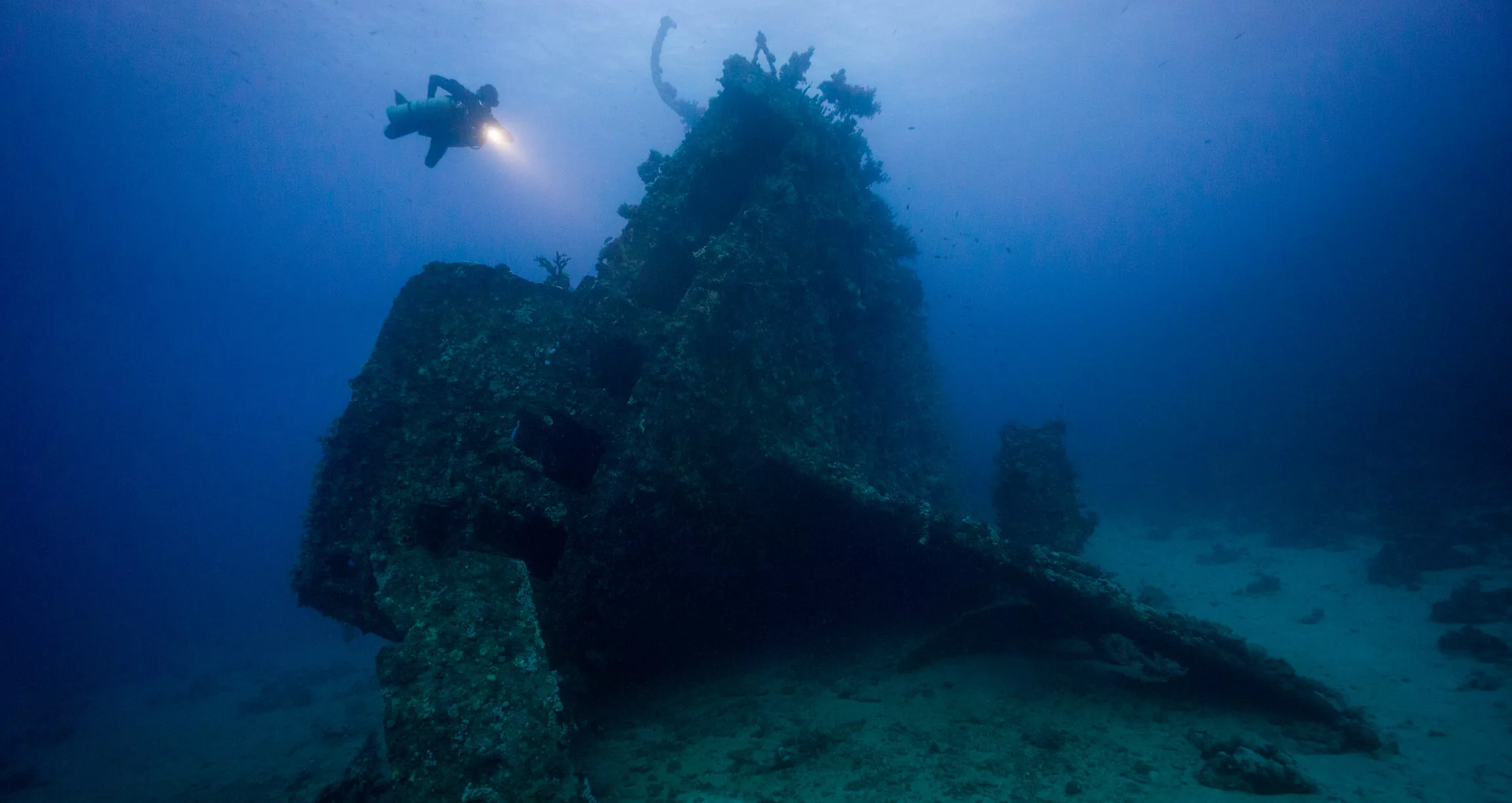One of the most popular wrecks we dive in Bikini Atoll is the IJN Nagato. So let’s dive right into this amazing vessel’s history.
Quick facts

| LENGTH | 215.80 meters |
| GROSS TONNAGE | 32720 tons |
| DEPTH AT THE BOTTOM | 52 meters |
| DEPTH MAIN DECK | 48-50 meters |
| DEPTH AT SHALLOWEST POINT | 33.5 meters |
| ACCESSIBILITY | Technical diver – ideally CCR |
Birth of the IJN Nagato

The battleship Nagato was the lead ship of a new battleship class: the Nagato class. She was the first super-dreadnought battleship of the Imperial Japanese Navy (IJN) to have 16-inch (416 mm) guns.
She started her life in Japan and the construction finished in 1919, after almost 3 years. She launched in November 1919 and was then assigned officially to the Imperial Japanese Navy.
She underwent modernization in 1936, replacing her coal boilers with steam turbines, and adding anti-aircraft guns. The navy also added a rebuilt superstructure in a pagoda mast style.
The pagoda mast is a typical style that was found on Japanese capital ships. Pagoda masts were built on masts by adding searchlight and other platforms, lookouts and shelters upon each other. The result resembles indeed a pagoda temple and is typical of the 1930s.
All of this meant that the Nagato was the flagship and pride of the Japanese navy, There is no doubt that the Nagato was destined to play a fated role in the world future.

War-time
At the onset of the Pacific War, she was the flagship of the Combined Fleet, On 2nd December 1941, Admiral Yamamoto issued the coded phrase “Niitaka yama nobore” (Climb Mount Niitaka) from the bridge of the Nagato. This phrase was the order to commence the attack on Pearl Harbor.

Other than this infamous episode, the Nagato saw then very limited combat during World War II.
She sailed with the First Fleet for Midway; she did not see combat action, though she transported carrier Kaga’s survivors back to Japan. After the Battle of Midway, she saw little action as she was based out of southern and central Pacific bases.
Her next combat mission came in Jun 1944 as a member of Operation A-Go against the Allied assault on the Marianas. During the Battle of the Philippine Sea, American airmen targeted her but she came out unhurt.
During Operation Sho-Go, she sailed for the Philippines in Combined Fleet’s last ditch effort to achieve a decisive naval victory. On 24th October 1944, during the Battle of the Sibuyan Sea, an overwhelming amount of American dive bombers attacked her. She got hit by two bombs, disabling her guns and killing 52 crewmen. She did fight on during the Battle of Samar. Although dealing damage on the American task force, the Japanese fleet broke off before they could destroy the landing transports.
During the withdrawal, over the next two days, she suffered further attacks by dive bombers. The damage was not severe, but 38 further crew died. She arrived at Yokosuka for repairs on 25th November 1944 where she would remain for the rest of the war due to lack of fuel.
The end of the war
In February 1945, she was assigned a coastal defense ship. In June 1945, the navy removed her anti-aircraft guns to place them ashore. On 18th July 1945, bombers from American carriers attacked her. She got hit by three bombs, killing her skipper Admiral Otsuka Miki. That was the last time she saw action. She was secured by American forces on 30th August 1945 after the Japanese surrender.
At the end of the war, the Nagato was the only Japanese battleship still afloat.
Operation Crossroads
A long voyage
The ship was selected to participate as a target ship in Operation Crossroads. She left Japan on 18th March 1946, along with the Japanese cruiser Sakawa. Sakawa was also fated to be one of Operation Crossroads’ victims.
With only two of her four propellers in working order, the Nagato could barely manage 10 knots (or 19 km/h). It is a very slow speed to cover such a distance as you can imagine! But that was not all that happened during this voyage.
They had not repaired her hull after the attack in July 1945 and she leaked enough that her pumps could not keep up.
The light cruiser Sakawa broke down on 28th March and the Nagato tried to tow her. But one of her boilers malfunctioned and the ship ran out of fuel in bad weather.
The ship had a list of seven degrees to port by the time tugboats from Eniwetok arrived on 30th March. The tugboats towed her at the grand speed of 1 knot (1.9 km/h) all the way to Eniwetok. They finally made it on 4th April 1946. She received some temporary repairs and was able to sail to Bikini Atoll under her own steam – actually quicker than her original speed!

Test time
Operation Crossroads began with the first blast (Test Able) on 1st July 1946. The IJN Nagato was 1,500 meters from ground zero and was only lightly damaged by this bomb. It was the only large ship inside the 1,000-yard radius which sustained moderate, rather than serious, damage.
Analysis stated that her stern-on orientation to the bomb gave her some protection. But another theory says that since she had not been repaired from her war damages, it was actually really hard to determine the extent of the bomb.
The Nagato had been placed near the aim point to guarantee her being sunk. But since the Able bomb missed its target, the Nagato got to survive another day.
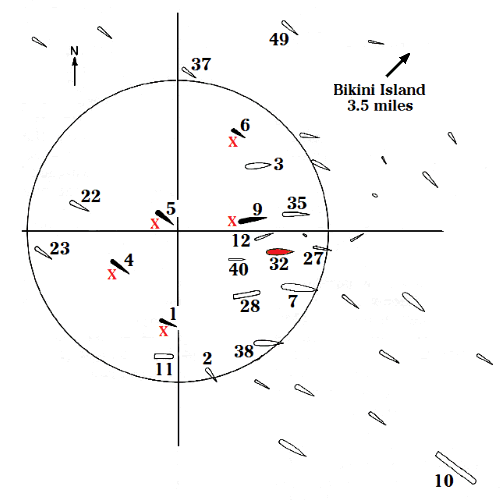
After Test Able, a skeleton crew boarded the Nagato to assess the damage and prepare her for the next test on 25th July. As a test, they operated one of her boilers for 36 hours without any problems.
The end
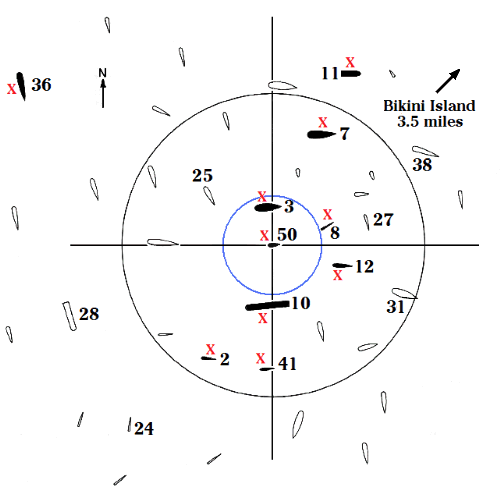
For Test Baker, an underwater explosion, the Nagato was positioned 870 meters from ground zero.
The battleship rode out the tsunami from the explosion with little apparent damage. She yet again did not sink and got to see another day. She only had a slight starboard list of two degrees after the tsunami dissipated.
A more thorough assessment could not be made because she was dangerously radioactive.
Her list gradually increased over the next five days and she capsized and sank during the night of 29th to 30th July 1946

Dive the IJN Nagato today
The Nagato sank and landed completely upside down on the sea bed at 52m. She now lies there at the bottom of Bikini Atoll ready for us to explore.
To dive the Nagato is quite amazing and the first thought you will have is: everything about her is huge! It will take several dives to get your head around this amazing wreck.
The first thing you will see as you descend is her 2 large rudders and 4 huge props at about 33m (108ft). One challenge is to get all 4 props in a single photograph! As the wreck is upside down, the propellers and rudders are now facing the surface.

All about the big guns
We often continue our descent towards the stern. That part has now broken away and lies on the seafloor. But one striking highlight which survived are the two huge 16″ guns pointing directly astern. They hang from the hull at about 50 m and are one of the highlights of that wreck. The the barrels are about 16 meter long, so you will not miss them! The guns are still squarely in their mounts.
Very often, after seeing the props, rudders and exploring that part will take up almost an entire dive! Remember: that wreck is HUGE!

And the pagoda
As you swim along the port side towards the bow, you will come across the pagoda mast (the bridge) from where Admiral Yamamoto sealed the fate of Japan.
The pagoda is lying on the seabed beside the ship. The end of the mast broke away as it hit the seabed. You can still easily see the various upper levels, which included spotting points, rangefinders, and gun directors. Look more closely you can see voice tubes and remains of the lift than ran up inside the mast.
Just forward of the pagoda, you can see a second pair of 16inch guns pointing out. This pair have the tampions (covers) installed.
Depending on your dive plan, you might not have much time to explore the bow area: it’s a 200 m/656 ft swim back to the mooring line.
One option is to be dropped on the mid-ships mooring by skiff or do a free descent on the bow—that said, most divers still choose to swim from the stern as there is lots to see on the way and lots of nooks and crannies to explore.

For those who desire it, there are options for penetration both at the stern and bow as well as in the mid-ship sections of the ship. You need to take care, however, if you decide to enter the wreck, as there are many old and discarded lines. Some lead into areas that have since collapsed. Do plan any serious penetrations properly and with the appropriate temporary lines laid.
For most divers, there is enough to see on the outside of the wreck and our guests often request to repeat dive the Nagato.
And more to dive on the Nagato?
There is not only a wreck to look at. The marine life is rather fascinating. Occasionally we spot mantas, schools of various fish species and there is a shark cleaning station.
Turtles are common visitors on the Nagato as well, and will often swim alongside divers. Due to the lack of human interaction in Bikini, they are far less skittish than turtles found elsewhere.
On the way back, observant divers will notice sharks and other sea life coming into the cleaning station halfway back to the mooring. In fact, the Nagato is a good place to see sharks in general. Normally, there are many grey reef and black tip sharks, and occasionally silver tips. And don’t be surprised to be sharing your deco time with a tiger shark or two swimming around you.
The Nagato is one of the more challenging dives in Bikini Atoll due to depth and her being upside down. But definitely one of the best dives! To dive the IJN Nagato and the other shipwrecks of Bikini Atoll, join us on Pacific Master.
